About the Author
Maria Paz Moreno is an essayist, poet, and literary critic. She is professor of Spanish at the University of Cincinnati, Ohio. A native of Spain, her research focuses on the literature and gastronomy of her native country. Moreno is the author of seven books of poetry and several scholarly books and critical editions, among them El culturalismo en la poesa de Juan Gil-Albert [Cultural References in the Poetry of Juan Gil-Albert] (2000) and De la pgina al plato. El libro de cocina en Espaa [From the Page to the Plate: The Spanish Cookbook] (2012).

Madrid
Big City Food Biographies Series
Series Editor
Ken Albala, University of the Pacific, kalbala@pacific.edu
Food helps define the cultural identity of cities in much the same way as the distinctive architecture and famous personalities. Great cities have one-of-a-kind food cultures, offering the essence of the multitudes who have immigrated there and shaped foodways through time. The Big City Food Biographies series focuses on those metropolises celebrated as culinary destinations, with their iconic dishes, ethnic neighborhoods, markets, restaurants, and chefs. Guidebooks to cities abound, but these are real biographies that will satisfy readers desire to know the full food culture of a city. Each narrative volume, devoted to a different city, explains the history, the natural resources, and the people that make that citys food culture unique. Each biography also looks at the markets, historic restaurants, signature dishes, and great cookbooks that are part of the citys gastronomic make-up.
Books in the Series
New Orleans: A Food Biography , by Elizabeth M. Williams
San Francisco: A Food Biography , by Erica J. Peters
New York City: A Food Biography, by Andrew F. Smith
Madrid: A Culinary History , by Maria Paz Moreno
Published by Rowman & Littlefield
A wholly owned subsidiary of The Rowman & Littlefield Publishing Group, Inc.
4501 Forbes Boulevard, Suite 200, Lanham, Maryland 20706
www.rowman.com
Unit A, Whitacre Mews, 26-34 Stannary Street, London SE11 4AB
Copyright 2018 by Rowman & Littlefield
All rights reserved . No part of this book may be reproduced in any form or by any electronic or mechanical means, including information storage and retrieval systems, without written permission from the publisher, except by a reviewer who may quote passages in a review.
British Library Cataloguing in Publication Information Available
Library of Congress Cataloging-in-Publication Data
Names: Moreno, Mara Paz, 1970 author.
Title: Madrid : a culinary history / by Maria Paz Moreno.
Description: Lanham : Rowman & Littlefield, [2018] | Series: Big city food biographies series | Includes bibliographical references and index.
Identifiers: LCCN 2017021863 (print) | LCCN 2017022606 (ebook) | ISBN 9781442266414 (electronic) | ISBN 9781442266407 (cloth)
Subjects: LCSH: CookingSpainMadridHistory. | Food industry and tradeSpainMadridHistory. | Cooking, SpanishHistory.
Classification: LCC TX723.5.S7 (ebook) | LCC TX723.5.S7 M6743 2018 (print) | DDC 641.5946 /41dc23
LC record available at https://lccn.loc.gov/2017021863
 The paper used in this publication meets the minimum requirements of American National Standard for Information SciencesPermanence of Paper for Printed Library Materials, ANSI/NISO Z39.48-1992.
The paper used in this publication meets the minimum requirements of American National Standard for Information SciencesPermanence of Paper for Printed Library Materials, ANSI/NISO Z39.48-1992.
Printed in the United States of America
To the memory of my father, Fernando Moreno Rubio, who loved books, great food, and traveling the world.
Big City Food BiographiesSeries Foreword
C ities are rather like living organisms. There are nerve centers, circulatory systems, structures that hold them together, and, of course, conduits through which food enters and waste leaves the city. Each city also has its own unique personality, based mostly on the people who live there but also on the physical layout, the habits of interaction, and the places where people meet to eat and drink. More than any other factor, it seems that food is used to define the identity of so many cities. Simply say any of the following words, and a particular place immediately leaps to mind: bagel, cheesesteak, muffuletta, chowda, and cioppino. Natives, of course, have many more associationstheir favorite restaurants and markets, bakeries and doughnut shops, pizza parlors, and hot dog stands. Even the restaurants seem to have their own unique vibe wherever you go. Some cities boast great steakhouses or barbecue pits; others, their ethnic enclaves and more elusive specialties like Frito pie in Santa Fe, Cincinnati chili, and the Chicago deep-dish pizza. Tourists might find snippets of information about such hidden gems in guidebooks; the inveterate flaneur naturally seeks them out personally. For the rest of us, this is practically uncharted territory.
These urban food biographies are meant to be not guidebooks but real biographies, explaining the urban infrastructure, the natural resources that make each city unique, and, most important, the history, people, and neighborhoods. Each volume is meant to introduce you to the city or reacquaint you with an old friend in ways you may never have considered. Each biography also looks at the historic restaurants, signature dishes, and great cookbooks that reflect each citys unique gastronomic makeup.
These food biographies also come at a crucial juncture in our culinary history as a people. Not only do chain restaurants and fast food threaten the existence of our gastronomic heritage, but we are also increasingly mobile as a people, losing our deep connections to place and the cooking that happens in cities over the generations with a rooted population. Moreover, signature dishes associated with individual cities become popularized and bastardized and are often in danger of becoming caricatures of themselves. Ersatz versions of so many classics, catering to the lowest common denominator of taste, are now available throughout the country. Our gastronomic sensibilities are in danger of becoming entirely homogenized. The intent here is not, however, to simply stop the clock or make museum pieces of regional cuisines. Cooking must and will evolve, but understanding the history of each citys food will help us make better choices, make us more discerning customers, and perhaps make us more respectful of the wonderful variety that exists across our great nation.
Ken Albala
University of the Pacific
Acknowledgments
T his book could not have been written without the help and generous support of the people and institutions that have assisted me along the way. I am grateful to the University of Cincinnati for granting me a sabbatical semester to work on this project and to the Taft Research Center, also at the University of Cincinnati, for the Taft Faculty Release Fellowship that allowed me to carry out my research in Madrid and devote several more months in Cincinnati to completing it. Thank you as well to the University of Cincinnati Libraries and their staff for processing my never-ending OhioLink and interlibrary loan requests efficiently and smoothly. I am grateful, too, to the staff at Madrids Biblioteca Nacional de Espaa and to Ester Garca Guilln at Madrids Real Jardn Botnico for her generosity and kindness in opening the Jardns archives for my research.
I am especially indebted to Professor Ken Albala from the University of the Pacific, series editor for the Big City Food Biographies at Rowman & Littlefield, for his support of the project and the excellent feedback that greatly improved this manuscript. To Professors Salvador Garca Castaeda from the Ohio State University and Marina Bettaglio from the University of Victoria, British Columbia, thank you for supporting the idea for this book when it was just a project in its early stages. My sincere thanks also to my Madrid friends, Almudena Toms, Julin de Unamuno, CSIC professor Maria del Carmen Simn Palmer, and researchers Pilar Bueno and Raimundo Ortega, for all their advice and hospitality. Heartfelt thanks, too, to Professor Connie Scarborough from Texas Tech University and Charles Tepe, who showed me some of the most interesting places to eat and drink in Madrid.


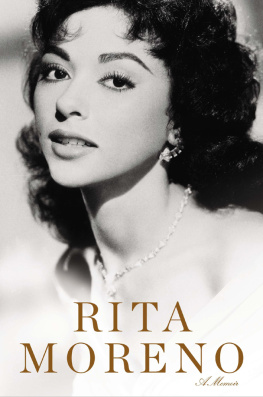
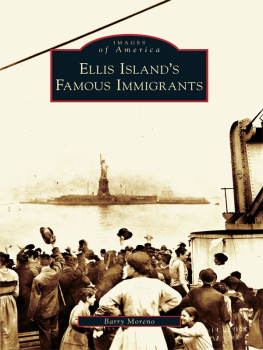
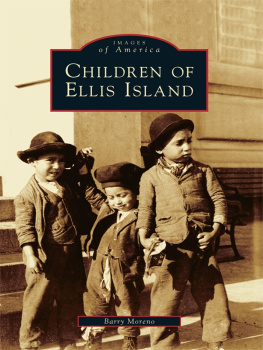
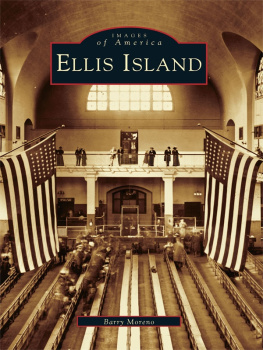
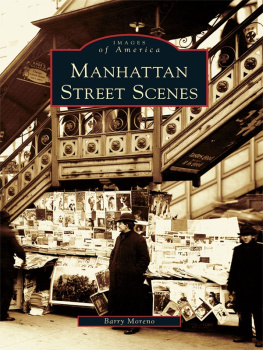
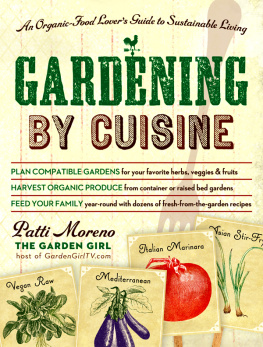
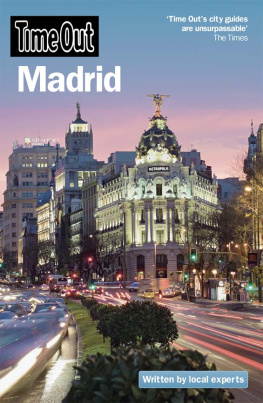
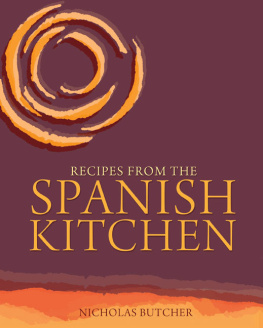
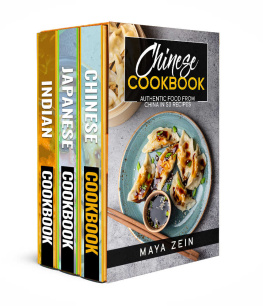
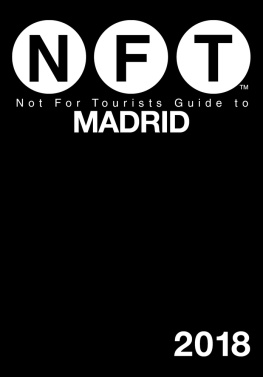
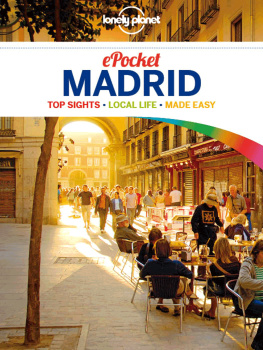
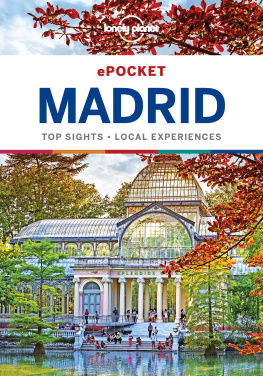
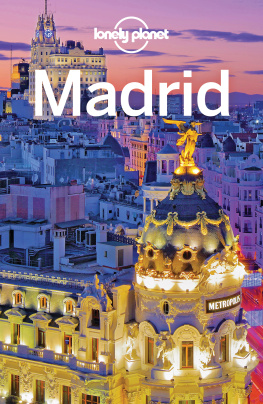
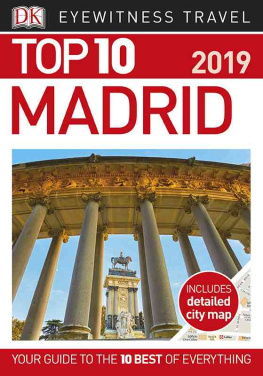
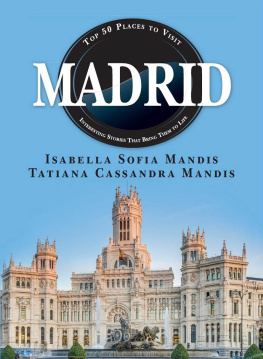
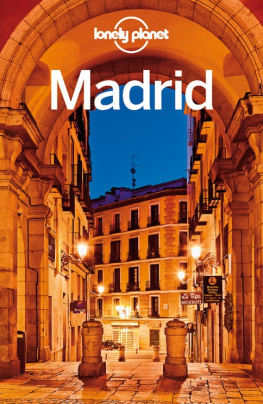
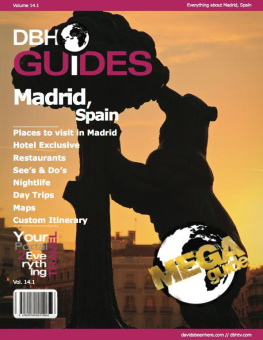

 The paper used in this publication meets the minimum requirements of American National Standard for Information SciencesPermanence of Paper for Printed Library Materials, ANSI/NISO Z39.48-1992.
The paper used in this publication meets the minimum requirements of American National Standard for Information SciencesPermanence of Paper for Printed Library Materials, ANSI/NISO Z39.48-1992.